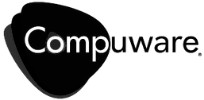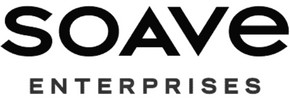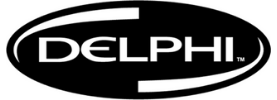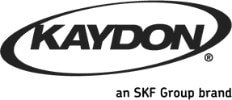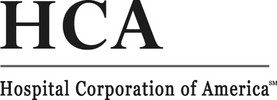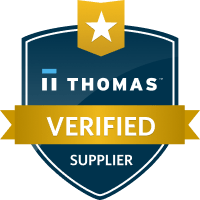
ERP Software and Marketing Help Skyrocket Sales
In today’s fast-paced business environment, integration is the key to efficiency. Particularly, aligning marketing activities with Enterprise Resource Planning (ERP) single data base software solutions for manufacturing, distribution and food that has analytic, and Warehouse Management Systems (WMS) can transform the way businesses operate. This integration not only streamlines processes but also provides a cohesive approach to customer service and product delivery.
Differentiating the Power of WMS and ERP Systems
Discover the game-changing differences between two groundbreaking systems that revolutionize business operations. While a Warehouse Management System (WMS) stands tall in streamlining warehouse management and fulfillment, brace yourself for the comprehensive scope of an Enterprise Resource Planning (ERP) system that engulfs every aspect of your enterprise.
Embrace the future of warehousing with a WMS that seamlessly integrates with Transport Management Systems (TMS) and Customs Management Systems (CMS). Witness the zenith of operational prowess as your warehousing operation ascends to unprecedented levels of efficiency.
In contrast the might of an all-in-one ERP system, encompassing a multitude of features that leave no stone unturned. There is where real-time inventory tracking meets uncompromising warehouse optimization. A ERP masterfully orchestrates the perfect picking and packing routes for unparalleled warehouse efficiency.
Combining WMS and ERP will elevate your business to extraordinary heights with the unrivaled power of WMS and ERP systems.
The Role of ERP Software Solutions in Marketing
ERP software is not just for tracking finances and operations; it’s a treasure trove of marketing data. By leveraging the ERP software analytics, businesses can gain insights into customer behavior, sales trends, and product performance. This data is crucial for developing targeted marketing strategies that speak directly to the needs and wants of the customer base. For instance, understanding which products are in high demand can help marketing teams create more effective promotional campaigns.
- Personalized Email Campaigns
Utilize ERP software data to segment the customer base into different groups based on their purchasing history, preferences, and behavior. Develop personalized email campaigns targeting each segment with offers, products, and content tailored to their specific interests and past purchases. For example, customers who frequently purchase a specific type of product could receive emails highlighting new arrivals or special offers related to those items. - Loyalty and Reward Programs
Analyze purchase frequency and order value data from the ERP software analytics data to identify your most loyal customers. Create a loyalty program that rewards repeat purchases, offering exclusive discounts, early access to new products, or special perks. This not only encourages repeat business but also turns satisfied customers into brand ambassadors. - Time-sensitive Flash Sales
Use ERP software analytics data to identify excess stock or products that are not moving as quickly as anticipated. Launch time-sensitive flash sales to clear out this inventory, targeting customers who have shown interest in similar products in the past. Promote these sales through social media, email marketing, and on your website to create urgency and boost sales. - Product Bundling and Cross-Promotions
Analyze the software analytic data on frequently bought together products and customer preferences to create attractive product bundles. Offer these bundles at a special price to encourage customers to purchase more. Additionally, set up cross-promotions, where purchasing one product makes the customer eligible for a discount on another relevant product. This can increase the average order value and improve customer satisfaction by providing them with deals that are relevant to their needs. - Predictive Sales Campaigns
Leverage sales trend data from the ERP software analytics data to predict which products are likely to be in demand in the upcoming season or during specific events or holidays. Develop marketing campaigns in advance for these products, including targeted advertisements, email marketing, and social media campaigns. This proactive approach allows you to capitalize on predicted demand surges, ensuring that your marketing efforts are aligned with customer interests and market trends.
By integrating these marketing activities with insights derived from ERP software analytics data solutions, businesses can create more effective and targeted promotional campaigns that directly address the needs and interests of their customer base. This not only improves the efficiency of marketing efforts but also enhances customer engagement and sales outcomes.

The Importance of Warehouse Management in Marketing
Warehouse management software plays a pivotal role in fulfilling the promises made by marketing campaigns. Efficient warehouse operations ensure that products are available when customers want them, thereby reinforcing trust and satisfaction. Real-time inventory management software is, a key feature of advanced Warehouse Management Systems (WMS), allows marketing teams to align their campaigns with current stock levels, avoiding the pitfalls of promoting out-of-stock items.
The marketing activities influenced by Warehouse Management Software can indeed differ from those driven by ERP Software insights, as they relate more directly to inventory, logistics, and order fulfillment. While ERP Software provides a broad view of business operations and customer data, Warehouse Management Software focuses on the specifics of stock levels, storage, and distribution. Here’s how this distinction can shape marketing activities:
Warehouse management Software is crucial in ensuring that marketing promises are kept, directly impacting customer satisfaction and brand reputation. Efficient warehouse operations support marketing efforts in several unique ways:
- Real-Time Stock Availability Updates
Use Warehouse Management Software (WMS) data to provide customers with real-time stock availability on your website. This transparency helps in managing customer expectations and reduces the risk of overselling. Marketing can leverage this information by highlighting in-stock products in email campaigns or on social media, encouraging immediate purchases due to known availability. - Geo-targeted Promotions
Analyze the warehouse data to identify geographical areas with surplus stock and create geo-targeted marketing campaigns to reduce inventory in those locations. This could involve special promotions, discounts, or free shipping offers for customers in specific regions, helping to balance inventory levels and reduce shipping times and costs. - Exclusive Pre-order Campaigns
Utilize warehouse data to identify upcoming product arrivals and organize exclusive pre-order campaigns. Marketing can create buzz around these products through email marketing, social media, and website banners, encouraging customers to reserve their items before they officially go on sale. This not only generates excitement but also helps in forecasting demand more accurately. - Back-in-Stock Notifications
Implement a system where customers can sign up to receive notifications when out-of-stock items become available again. This service, supported by efficient warehouse restocking processes, keeps customers engaged and encourages them to return to your website, increasing the chances of making a sale and improving customer satisfaction. - Tailored Shipping Promotions
Based on warehouse logistics, such as location and shipping capabilities, create tailored shipping promotions. For example, offer free same-day or next-day delivery in areas where your warehouse can support fast shipping. This can be a significant selling point and can be highlighted in marketing campaigns targeting those specific areas.
Integrating Warehouse Management with marketing activities allows for a more synchronized approach, where marketing strategies are informed by current inventory and logistics capabilities. This alignment not only ensures that marketing campaigns are realistic and deliverable but also helps in optimizing inventory levels and improving the overall customer experience.
Integration of Marketing Activities with ERP Software and Warehouse Management
The true potential is unlocked when marketing activities are integrated with integrated ERP and warehouse management Software. This integration enables businesses to operate more dynamically, adjusting marketing strategies based on real-time data from sales and inventory. For example, if ERP data indicates a surplus of a particular product, marketing can immediately implement promotions to move excess inventory, thereby preventing overstock situations.
Integrating marketing activities with both ERP Software and Warehouse Management Software unlocks a new level of efficiency and effectiveness in business operations. By harnessing the comprehensive insights from ERP Software regarding customer behavior and sales trends, alongside real-time inventory and logistical data from Warehouse Management, businesses can execute highly coordinated and strategic marketing campaigns. For example, leveraging ERP Software insights to tailor email marketing and loyalty programs while using warehouse data to ensure product availability and timely delivery can significantly enhance customer satisfaction.
This synergy allows for the creation of dynamic marketing strategies such as predictive sales campaigns based on upcoming trends identified in the ERP Software, coupled with warehouse-informed geo-targeted promotions to manage inventory levels effectively. Furthermore, the integration facilitates the launch of real-time stock availability alerts and exclusive pre-order opportunities, ensuring that marketing efforts are not only well-informed but also closely aligned with the operational realities of inventory and fulfillment.
By intertwining these systems, businesses can ensure that their marketing initiatives are not only more relevant and personalized but also backed by the operational capacity to deliver on promises made, leading to increased trust and loyalty from customers.
“In the evolving landscape of digital marketing, the advent of artificial intelligence has marked a pivotal shift in how we approach marketing strategies and campaigns,” states Melih Oztalay, CEO of SmartFinds Marketing.
“By integrating AI with the rich data landscapes of ERP and Warehouse Management Systems, we’ve been able to significantly enhance the efficiency of our marketing processes. This synergy allows us to not only predict consumer behavior more accurately but also to streamline our inventory management and optimize our supply chain logistics.
The result is more effective, targeted marketing and advertising campaigns that are not only aligned with consumer demands but are also synchronized with our operational capabilities. AI has enabled us to transform vast amounts of ERP and WMS data into actionable insights, facilitating a more dynamic, responsive, and ultimately successful marketing approach.”
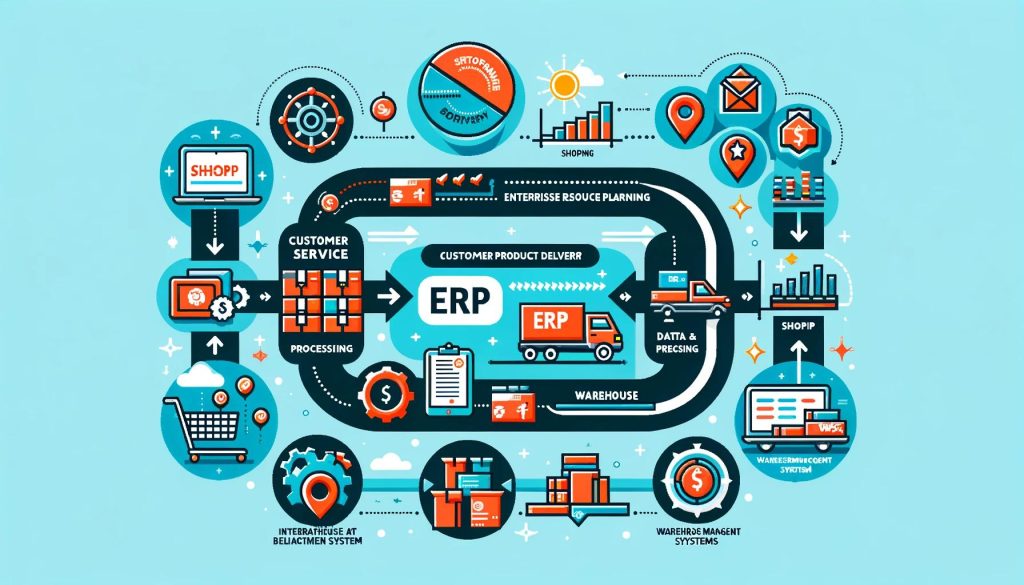
Case Studies of Real-World ERP Software Examples
SMC Data System’s partnership with VAI has been transformative, marking a significant advancement in our operational capabilities. Transitioning to VAI’s integrated ERP software, which enabled us to operate on a single database. This has been a seamless experience, ensuring that there was no disruption of operations across multiple locations. This smooth transition underscores the efficiency and reliability of the system.
One of the most notable outcomes has been achieving an astonishing 99.95% inventory accuracy, alongside a significant reduction in operating expenses. This level of precision has fundamentally changed how we manage our inventory and conduct business. The introduction of VAI S2K Warehouse Management software has revolutionized our warehouse processes, enabled real-time monitoring of activities, significantly speeding up operations. This upgrade has been instrumental in minimizing entry errors and measuring the efficiency of our warehouse employees, leading to an enhanced operational framework.
The results speak for themselves: we’ve elevated our fulfillment rates from 96% to over 99.5% accuracy consistently. This leap in performance is not just a number; it represents a tangible impact on customer satisfaction and business efficiency. Moreover, the implementation of VAI’s S2K Warehouse has proven to be financially beneficial, yielding over 50% in accounting staff time savings. This efficiency gain underscores the potential for cost savings and productivity improvements across the board.
The integration of real-time inventory tracking, cycle counting, and RF devices has resulted in virtually negligible inventory variances. To put this in perspective, we witnessed a dramatic drop from a $170,000 inventory variance to less than $5,000 within just one year. Such figures not only illustrate the profound impact of VAI’s solutions on our operations but also highlight the potential for other businesses to achieve similar results.
Furthermore, the adoption of the warehouse S2K Mobile application has enabled us to dramatically improve our order fulfillment rates. We can now turn orders within 24 hours or even the same day, maintaining a 99.6% fill rate. This level of efficiency has set new standards within our operations, enabling us to meet customer demands with unprecedented speed and accuracy.
Through these changes, it’s clear that the integration of sophisticated ERP and warehouse management systems can lead to profound improvements in business efficiency and customer satisfaction. Our experience with VAI’s solutions exemplifies the potential for technology to reshape the landscape of business operations.
Additional ERP Software case studies from SMC Data Systems can be found with video testimonials and additional roi success stories.
Best Practices for Integration
Successful integration starts with choosing the right ERP and WMS Software that offer compatibility with marketing platforms. It’s also essential to foster communication and collaboration across departments to ensure data is used effectively. Regularly reviewing data and processes can help identify areas for improvement, ensuring that the integration continues to meet the evolving needs of the business.
“In today’s rapidly changing business landscape, the ability to adapt and respond instantly is not just an advantage; it’s a necessity,” states Dani Kaplan, Owner of SMC Data Systems based in New York City, NY.
“Companies must have immediate access to detailed inventory levels, especially after allocations to production or earmarked for future orders.
Understanding the specifics of procurement—knowing precisely what to buy, when, and from whom—is crucial. Without this real-time information, businesses face a domino effect of challenges: production disruptions, order cancellations, and the resultant excess inventory that can severely impact cash flow and operational efficiency.
Integrating sophisticated ERP and warehouse management systems, as we have seen with VAI’s solutions, transforms this dynamic. It not only prevents these pitfalls but also elevates operational capabilities, enabling businesses to operate more strategically and resiliently in today’s uncertain market.
The transition to such integrated systems, as demonstrated in our collaborative efforts, underscores the transformative potential of real-time data in maintaining seamless operations, optimizing inventory management, and ensuring customer satisfaction.
This is the cornerstone of modern business resilience and growth.”
Marketing Activities and ERP Software Is a Necessity
Integrating marketing with ERP and Warehouse Management is not just a luxury; it’s a necessity for businesses looking to stay competitive and responsive in the digital age. By breaking down silos and combining data from different areas of the business, companies can make more informed decisions, improve customer satisfaction, and drive growth.
Is your business ready to break down the barriers between marketing, ERP, and warehouse management? Start by evaluating your current systems and processes to identify integration opportunities. Don’t hesitate to reach out to experts or explore new software solutions that can bring your business operations into a new era of efficiency.
Author: Melih Oztalay




